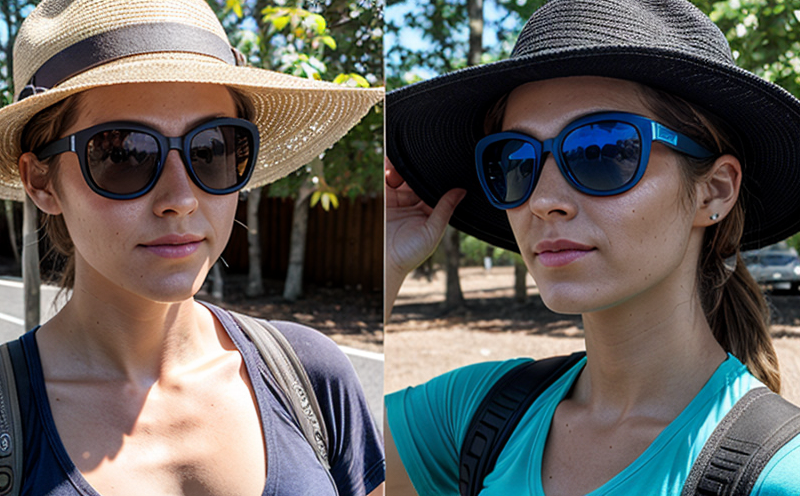EN 13758-1 Textiles Solar UV protective properties Classification and marking
The European Standard EN 13758-1 is a crucial document that defines the classification, marking, testing procedures, and acceptance criteria for textiles with solar ultraviolet (UV) protection. This standard ensures that textile products offer adequate protection against harmful UV radiation, thereby safeguarding consumers from potential skin damage and health risks associated with prolonged sun exposure.
The standard applies to a wide range of textiles used in various sectors such as clothing, accessories, furniture upholstery, and awnings. The primary goal is to classify these materials based on their ability to block UV rays, ensuring that the products meet specific levels of protection for different risk categories. This classification is essential for compliance with European Union regulations regarding textile safety.
The testing process outlined in EN 13758-1 involves several key steps. Initially, fabric samples are prepared according to specified dimensions and conditions. These samples undergo a standardized UV exposure test using an artificial light source that simulates natural solar radiation. The intensity of the UV light is carefully controlled to ensure consistency across all tests.
After the exposure period, the samples are analyzed for their transmittance rate of UV radiation. This measurement indicates how much UV light passes through the fabric. Based on this data, textiles are classified into different categories ranging from UVA1 (lowest protection) to UPF 50+ (highest protection). The classification is then marked on the product labels or tags.
The acceptance criteria for EN 13758-1 are stringent and ensure that only high-quality products meet the requirements. Products must not only pass the UV transmittance test but also comply with other relevant standards such as those concerning colorfastness, durability, and overall quality. This comprehensive approach guarantees that consumers can trust the stated protection levels provided by the textiles.
Understanding and implementing EN 13758-1 is critical for manufacturers, especially those operating in Europe or supplying to EU markets. Compliance with this standard not only ensures product safety but also enhances brand reputation and customer satisfaction. For businesses involved in textile production or import/export, familiarity with the testing procedures described in this document can be invaluable.
Additionally, EN 13758-1 helps in addressing the growing concern about UV radiation exposure among consumers. By providing clear labeling of protective properties, it empowers customers to make informed choices based on their specific needs and preferences. This standard also supports sustainable practices by encouraging manufacturers to develop more eco-friendly materials that meet stringent safety standards.
Why It Matters
The implementation of EN 13758-1 is not just about meeting regulatory requirements; it plays a vital role in protecting public health and ensuring consumer confidence. UV radiation can lead to various skin conditions, including sunburns, premature aging, and even more severe issues like skin cancer. By adhering to this standard, textile manufacturers contribute significantly to reducing these risks.
For businesses, compliance with EN 13758-1 offers several advantages beyond mere regulatory adherence. It enhances product quality by ensuring that the textiles meet high standards of durability and performance under rigorous testing conditions. Moreover, it provides a competitive edge in the market as consumers increasingly seek out products labeled with UV protection features.
The standard also fosters innovation within the textile industry. Manufacturers are encouraged to explore new materials and technologies aimed at improving UV protection without compromising other desirable properties like comfort or aesthetics. This leads to a continuous improvement cycle that benefits both producers and end-users alike.
Furthermore, EN 13758-1 promotes transparency in marketing practices by requiring accurate labeling of protective properties. Consumers can easily identify products that offer genuine UV protection, fostering trust between businesses and their customers. Such integrity strengthens brand loyalty and builds a positive image for compliant companies within the industry.
Applied Standards
| Standard Reference | Description |
|---|---|
| EN 13758-1 | Classification, marking and testing of textiles with solar UV protective properties. |
| ISO/TR 20645:2019 | Guidelines for the use of test methods in determining the ultraviolet protection factor (UPF) of fabrics. |
| Standard Reference | Description |
|---|---|
| ASTM D7502-13 | Test methods for determining the ultraviolet protection factor (UPF) of fabrics. |
| EN 9286:2014 | Performance requirements and test methods for textiles used in sun protective clothing. |
Eurolab Advantages
At Eurolab, we pride ourselves on offering comprehensive textile testing services that encompass all aspects of EN 13758-1 compliance. Our state-of-the-art facilities and experienced technical staff ensure accurate and reliable results. Here’s why choosing us for your UV protection testing needs is beneficial:
- Accurate Testing Equipment: We utilize cutting-edge equipment tailored specifically for UV protection testing, ensuring precise measurements and consistent results.
- Comprehensive Services: From initial sample preparation to final classification marking, our team handles every step of the process, providing expert guidance at each stage.
- Compliance Expertise: Our professionals stay updated with the latest developments in textile standards and regulations, ensuring that you always meet current requirements.
- Prompt Reporting: Timely delivery of reports allows for swift decision-making and quicker market entry if necessary.
- Cost-Effective Solutions: We offer competitive pricing without compromising on quality or service.
- Detailed Analysis: In-depth analysis of test results helps identify areas for improvement, whether it’s enhancing UV protection levels or refining production processes.
- Customized Approaches: Tailored solutions cater to individual client needs and project requirements, ensuring optimal outcomes tailored specifically to your business goals.
Partnering with Eurolab means leveraging our extensive expertise and resources to navigate the complexities of textile UV protection testing successfully. Let us help you achieve compliance while enhancing product quality and market competitiveness.





